It is at the meeting point of four prefectures – Kyoto, Shiga, Mie and Nara – where Uji, the oldest tea growing region, is located. There are two rivers running through this region, and even though the annual rainfall is high, the fertile soil’s permeability is excellent. The variety of landform provides good sunlight and frequent mists that help to fend off frost, which is the worst enemy of sprouting tea plants.
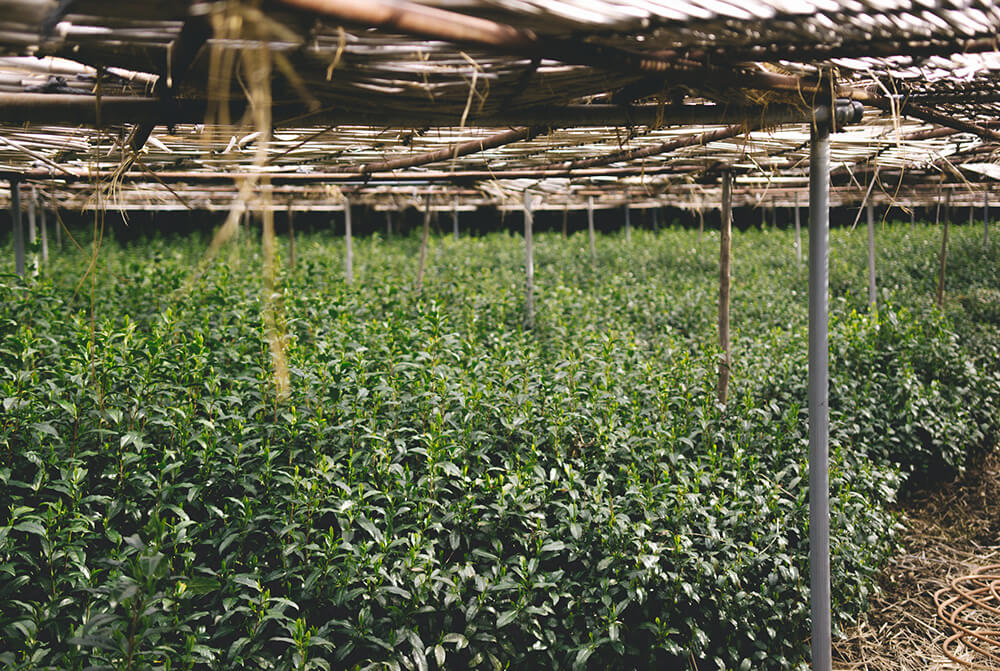
Matcha is powdered green tea, but it is distinctly different from leaf green teas. Before grinding, the leaves must be cultivated in a special way. Around April, shortly after the first new shoots of the season appear at the tips of tea plants, the tea plantations are completely shaded for about 20 days in order to shut out the direct sunlight. In the Uji region, farmers traditionally used straw spread on bamboo frames to cover tea shrubs. Today not many farmers keep up this tradition – most of them use dark sheets instead. Such a practice helps to accumulate nutrients. Shadowed tea plants increase chlorophyll production, by reducing natural photosynthesis. The lack of photosynthesis rises the level of L-theanine, an amino acid responsible for intense umami flavour profile. L-theanine is produced by the roots of the green tea plant and is then sent to the leaves. When light hits the leaves, L-theanine goes through a process which breaks it down to catechins, which increase bitterness. Shading the plants from direct sunlight stops this process and imparts a sweet flavour to the tea.
Green tea leaf harvest, chatsumi, begins at the end of April. The first one, ichibancha (meaning ‘first flush tea‘) lasts till the end of May. About 2 weeks after the first harvest, the new buds start to grow, and in approximately 45 days are ready for another harvest, which lasts till the turn of June and July. The third harvest takes place in August. Tea from each subsequent harvest is less powerful, and lower in colour and in flavour. Therefore, the first-picked-tea is considered the best one among all teas picked within a year. The leaves gathered during each harvest time also differ in quality – the two leaves at the tip of each new shoot are harvested for the top-class tea, the third leaf is used in producing tea that is of high quality and the fourth and fifth are used for producing a plain one.
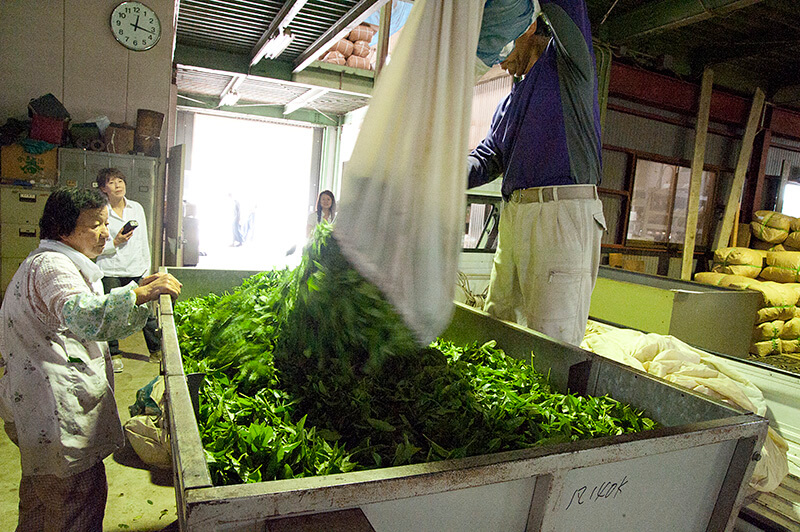
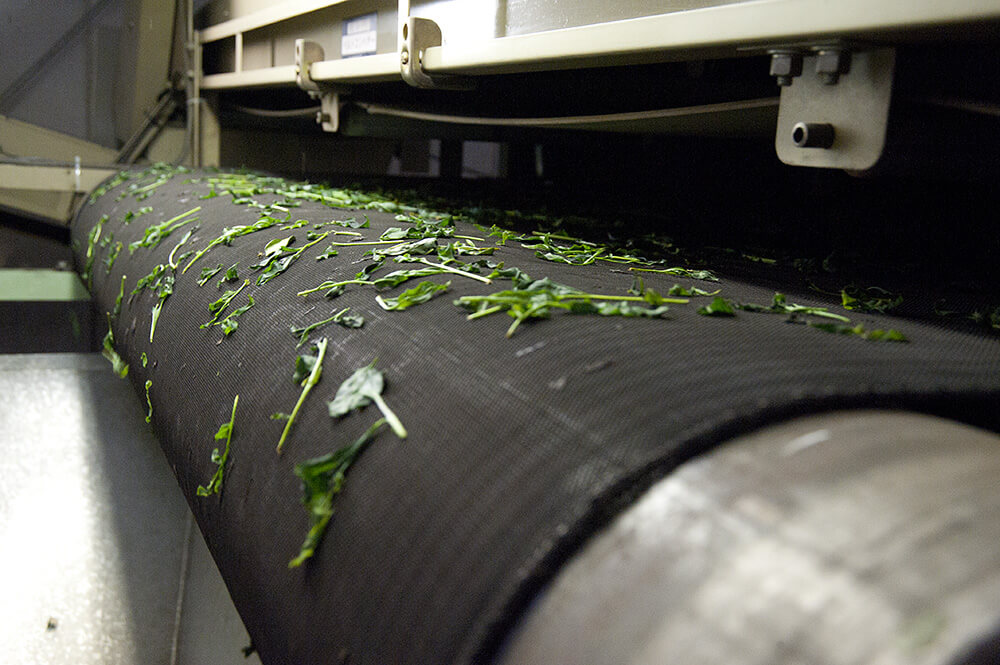
Immediately after picking, and in order to avoid oxidation and fermentation, the fresh tea leaves are brought to the tea processing facility and steamed.. Thanks to this steaming process, the vivid green colour, fresh aroma and nutritions are retained throughout the whole leaves. After steaming, the tea leaves are placed in a large multi-chambered air machine where they are gently blown around and cooled with a mild flow of air. They decrease in size around six times, compared to their fresh form. The leaves at this stage are called aracha. For its final drying, aracha is spread on a flat surface, unlike leaf teas. These, like gyokuro or sencha, after steaming go through the pressing and rolling processes, which affect the aroma of the infuse.
Dried tea leaves are sorted on the basis of their size, weight and colour. Next step is to remove stems and veins from aracha (they will be used for kukicha tea or, after roasting, hojicha tea). Only the main leaf parts full of nourishment and palatability are left as ingredients. They are once more checked and cleared from any useless elements and then cut into smaller pieces and re-dried. The final result are small, dark green, perfectly clean flakes referred to as tencha. Tencha is the raw material for matcha powder. It can be brewed in this form, but it is hard to find even in Japanese tea shops.
Photo on the left: aracha (green tea leaves before stem seperation) and, on the right, tencha (clean flakes of green tea after stem separation).
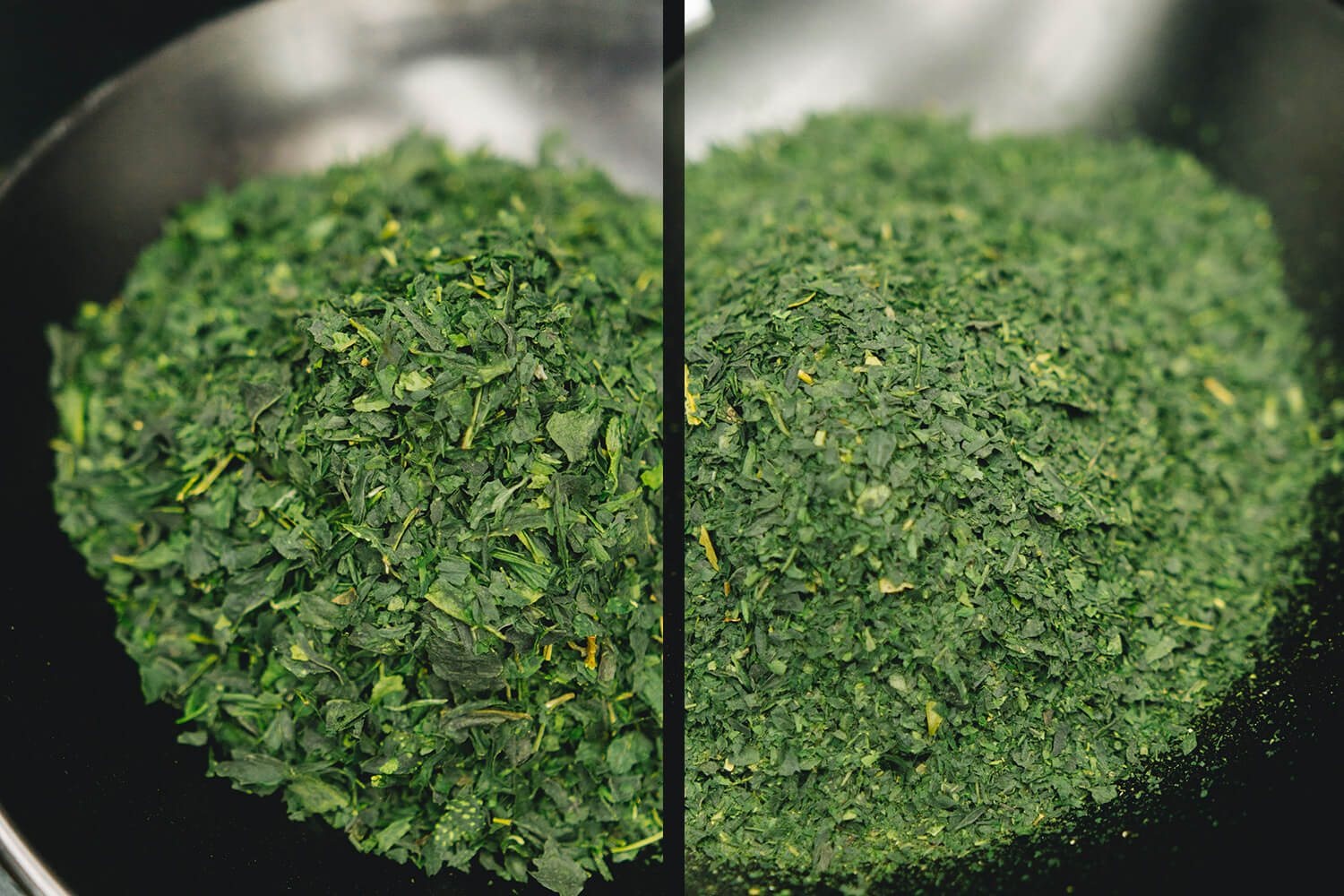
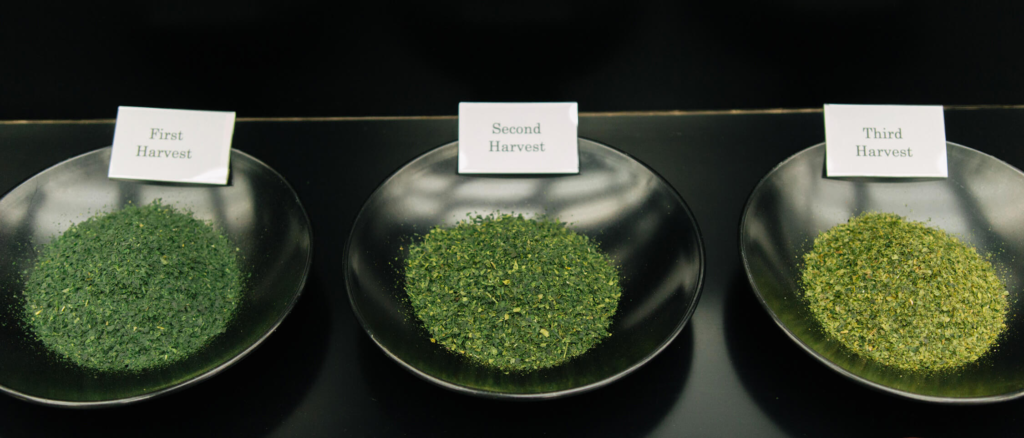

The final step in the processing of matcha is grinding of the tencha leaves. Two specially shaped stones rotate slowly grinding the tea into a fine powder. This process takes time and precision – each stone mill only grinds up to 30-40g tea per hour. As a result, the matcha powder is so fine it can even penetrate into finger tips. Thanks to its powdered structure it blends with water perfectly, making it seem like it is soluble (just like cocoa). A cup of matcha is perfectly even and creamy.
The last stage is a detailed inspection of the produced tea. The content of nutritions is measured and the tea is tested for contamination. Our matcha is certified by JONA, an independent and very strict Japanese organization, that issues a special organic certificate called JAS. This proves that our matcha tea comes from plantations free from pesticides and have not been contaminated by any external pollution during the production process.
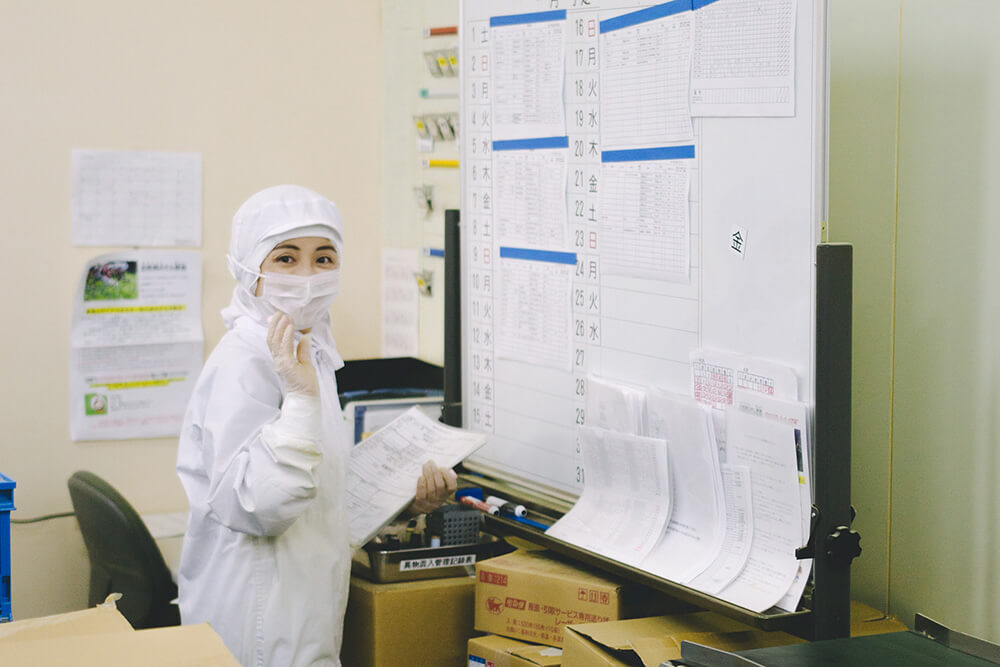
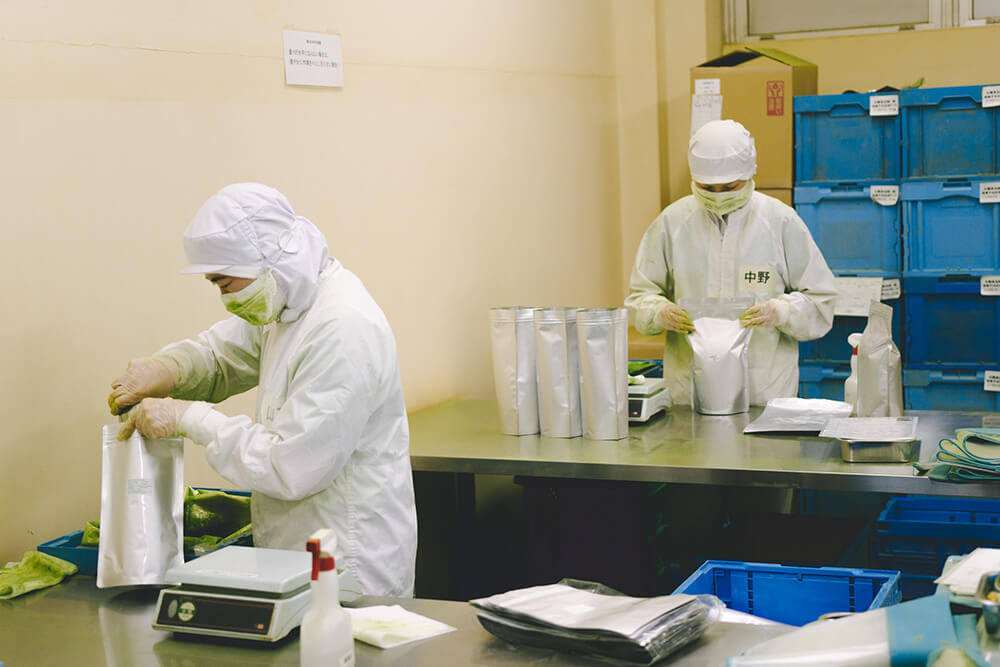
Immediately after confirming that matcha meets the stringent requirements, it is placed in airtight packages. The packing process is very meticulous as no contamination can be allowed. That is why everyone all people involved in packing are dressed in protective suits which are vacuumed upon each entrance to the packaging room. As matcha tea is very sensitive to external conditions it is then transported in small batches to our warehouse to assure peak freshness. At home, after opening, matcha should be stored in a refrigerator, in a container that is airtight and light-tight. Matcha left in an open container will quickly loose its vibrant green color, its taste and a large part of its nutrients.